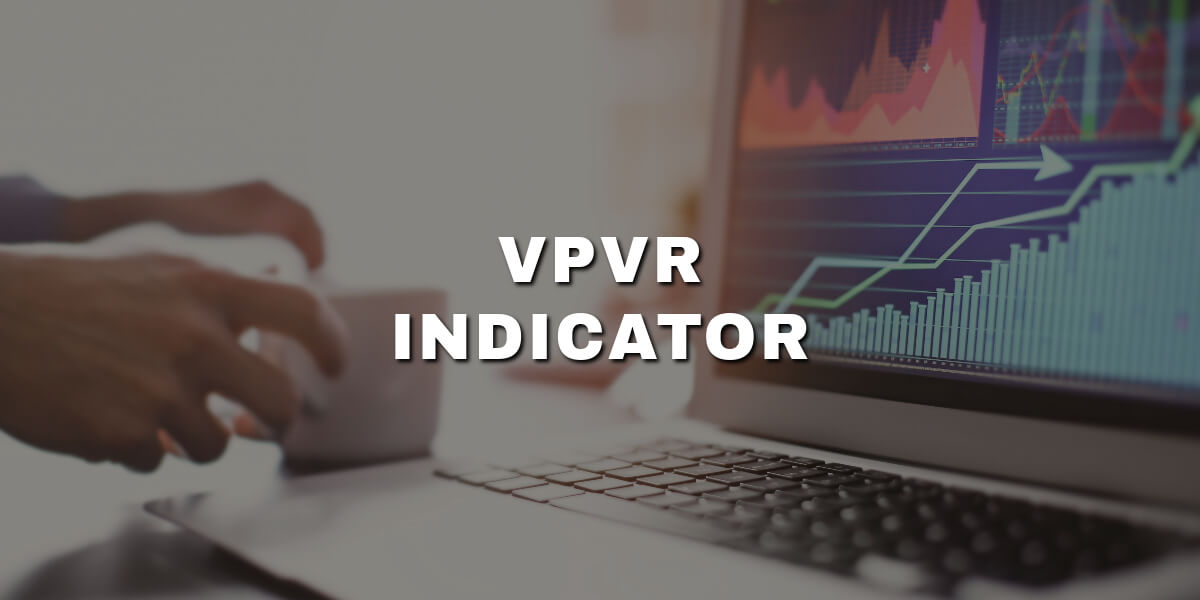
An In-Depth Look at the VPVR Indicator for Targeted Trading
The VPRV is an indicator highly appreciated by traders for its relevance. Let’s discover how to use it in your trades.
What is profile volume?
Volume is defined as an instrument for measuring quantity. Tt is quite simply the amount, or total volume, of an asset traded over a given period.
When a contract is negotiated, there must be a buyer and a seller. A transaction contributes to trading volume.
Displayed like this, it can be useful in certain cases, notably when a resistance or a support must be crossed, it is preferable that they are done with a large volume.
So the volume profile shows the volume, but instead of showing on the X axis, it shows on the Y axis.
Instead of giving us volume information over a period, it gives it to us on a price level.
It may seem insignificant, but this difference gives us much more information than the volume on the X axis.Incorporating the VPVR into a TradingView chart enhances the visual analysis, enabling traders to see the volume distribution alongside the price action.
This visual representation aids in identifying key trading levels and zones where the market might react.
Overall, the VPVR indicator emerges as a powerful tool for traders who aim to integrate volume analysis with traditional price action techniques.
Its ability to provide a comprehensive view of market dynamics over any chosen time period makes it invaluable for crafting well-informed trading strategies in a variety of market conditions.
We are therefore going to dissect this indicator to see all the information it can provide us.
Market Profile vs. Volume Profile
At first glance, market and volume profiles appear as similar charting techniques designed to simplify technical analysis for traders.
Many traders use these two terms interchangeably, and it’s understandable – they sound similar and even look alike. So, what’s the difference?
While Volume Profiles analyze the trading activity over time, Market Profiles focus on the time spent at each price level. Interestingly, even though Market Profiles don’t directly utilize trading volume to generate the histogram, the resulting values closely resemble those of Volume Profiles.
Despite their subtle differences, Market and Volume Profiles serve as complementary tools in a trader’s arsenal. While Market Profiles provide insights into price distribution and time spent at various levels, Volume Profiles offer a more direct representation of trading activity, aiding in the identification of areas of strong buying and selling pressure.
Volume profile price levels in the chart

Volume Profile shows market activity at certain price levels. It displays the price distribution over a specific period.
The Volume Profile displays important levels such as e.g. :
• Point of Control (POC or VPOC): The price level which corresponds to the highest traded volume, over a chosen period.
• Value Area (VA): The range of price levels in which a specified percentage of the overall volume was traded during a chosen period. In general, this percentage is set at 70%. As always this value can be modified in the Personalization Bar.
• Value Area High (VAH): The highest price level in the value area.
• Value Area Low (VAL): The lowest price level in the value area.
Every key price zone and level is visible in the chart.
Volume Profile key levels
Volume peaks and troughs are of great interest to many traders.
• High Volume Nodes (HVN): A volume peak is an area in which a large number of transactions have occurred at or around this price level. HVN represents a zone of acceptance or consolidation.
• Low Volume Nodes (LVN): A volume trough is an area in which a small number of transactions have occurred at or around this price level. LVN represents a zone of indecision and disagreement. Typically, the market does not stay at these price levels for very long.
What is VPVR Indicator ?
The Volume Profile Visible Range (VPVR) indicator is a powerful tool in trading that displays trading activity over a specified time frame and highlights price levels based on volume. Here’s a step-by-step guide on how to use it, along with an example:
Understanding VPVR indicator
Volume Profile: VPVR shows the volume traded at different price levels.
Value Area: The range where a significant portion of the volume was traded. This often includes the highest volume nodes (HVN).
High Volume Nodes (HVN): Price levels with high trading activity.
Low Volume Nodes (LVN): Price levels with low trading activity.
Using VPVR indicator in Trading

Identify Key Levels: Look for HVNs and LVNs. HVNs act as support/resistance, while LVNs can indicate price levels where price might move quickly.
Trend Confirmation: In a trend, price moving through HVN can confirm the trend’s strength.
Range Trading: In a sideways market, HVNs can mark the range’s boundaries.
Trading with VPVR Indicator Example Scenario
Imagine a stock trading between $50 and $60 over the last month.
Set the VPVR indicator for a one-month period for the following rules.
HVN at $55: A significant volume of shares was traded at this price, suggesting strong support or resistance.
LVN at $58: Less trading activity here, indicating that the price might move quickly through this level if it approaches.
Buying at Support: If the stock approaches $55 and shows signs of bouncing back, it could be a good buying opportunity, anticipating support at this HVN.
Breakout Trading: If the stock breaks through $55 with high volume, it might indicate a strong downward trend.
Fast Move Through LVN: If the stock moves towards $58, be prepared for a quick move to the next HVN, as there’s less volume to act as a buffer.
Tips for Effective Use
- Combine with Other Indicators: Use VPVR alongside other technical indicators for a more comprehensive analysis.
- Watch for Volume Changes: Significant changes in volume at certain price levels can signal a shift in market sentiment.
- Time Frame Selection: Adjust the VPVR for different time frames based on your trading strategy.
VPSV Indicator

The Volume Point of Control (VPOC) indicator, sometimes referred to as Volume Profile Session Volume (VPSV), is an advanced volume analysis tool used in trading chart analysis. It’s a part of the Volume Profile family, which also includes the Volume Profile Visible Range (VPVR) discussed earlier. Here’s an explanation of how VPOC/VPSV works and how it’s used in trading:
Fixed Range Volume Profile
The Fixed Range Volume Profile (FRVP) indicator is a tool used in technical analysis for trading. It is a variation of the Volume Profile, which displays trading activity over a specified range of price levels. Unlike other types of volume profiles that automatically adjust to visible data on a chart or a specific timeframe, the Fixed Range Volume Profile allows traders to select a specific range of dates or prices to analyze. Here’s a detailed breakdown of its key aspects:
Bottom Line
VPVR indicator, as explored in our article, stands out as an integral tool in the realm of volume profile trading. Its unique ability to utilize the concept of a volume profile fixed range allows traders to dissect market activity with precision.
This indicator is especially adept at highlighting the ‘area high’ or Value Area High (VAH), which is crucial for understanding where the bulk of trading has occurred over a selected time period.
The VPVR’s effectiveness is not limited to historical analysis; its insights can also be leveraged to predict future price action. This predictive capability is rooted in its detailed examination of the volume at different price levels, offering a clearer understanding of potential support and resistance areas.
By counting the number of ticks at each price support and resistance level, traders can identify where significant trading activity has taken place, leading to more informed decisions.




